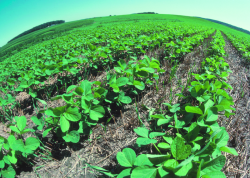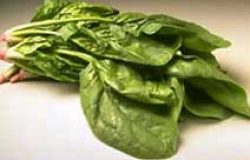Looks like the car is almost out of gas. Better go refill it. Okay, put in the pump...there. Glug glug. Wait. What's happening? The car is spitting the gas back out! This may seem silly, but it's what your body does with some of the fuel you need every day. Do not worry, though. It's not your fault. You just need a little help keeping it inside.
You are not a car. All a car needs is gas and oil and then it's good to go. Your body, on the other hand, is a machine with many more parts that are able to both build and heal themselves. This means you need a lot more things to keep running. You need air! You need sunshine! You need food! And that's not all! What if I told you that one of the things your body needs the most to grow is very hard for you to get?
Nitrogen is a gas that makes up most of our atmosphere. Your body needs it to grow, but cannot get it by breathing it in. Your lungs take it in and then push it right back out again because you cannot turn it into fuel. Yep, you spit your gas out. Sigh. We had better ask for some help.
So this important stuff is floating everywhere in the air. How do we get it into our bodies? Luckily for us, there are living things who can help us with that.
Bacteria are single-celled, living things who break down dead tissue and also turn nitrogen into a form that living things can use. They live on and in almost everything and help our world go around. Think of them as little recyclers. When something dies or is thrown away, they will break it down so that other living things can use it. And we should be grateful. Without them, we may never get the stuff we need into our bodies. They don't just break things apart, though. They also help build the things we need. It's kind of like tying something heavy to balloons. Let me explain. . .

These balloons will need a lot to keep them down on the ground.
George Chernilevsky, Public domain, via Wikimedia Commons
Some of the nitrogen floating around in the air gets mixed up in the dirt. As you now know, bacteria live all over the place, like in dirt.
Fixation is when one kind of bacteria changes nitrogen so that living things, like plants, can take it in. Think about a balloon with something tied to it. The balloon is weighed down so it won't float away and you can grab it. How do bacteria do this? Just like many things in science, we have no idea! What we know is that they stick the gas to other things in the dirt, making it easier for plants to grab. After this happens, we can eat the plants and get the stuff we need to keep growing. Unlike the nitrogen from before, I hope you will not spit this out. You never spit out your vegetables . . . right?

Soybeans are used by farms to put nitrogen into the soil.
Tim McCabe / Photo courtesy of USDA Natural Resources Conservation Service.
So how did that go again? Nitrogen floats in the air. It gets mixed in the dirt. Small living things in the dirt change it into something that plants can use. Plant roots soak up this gas. Then you eat the plants to get the stuff your body needs. When living things die, the gas is let back out into the air again. The
nitrogen cycle is how nitrogen moves from the air to living things in the dirt to plants to other living things and back into the air. Think of it as food moving through a factory. Workers must put it into packages we can buy. This work is like that, but is just too small for us to see.

Eat your spinach. You need your nitrogen.
Nitrogen has to travel a very long way to make it into our bodies. Without it, plants, animals, even we would not be able to grow. Good thing it has a lot of help along the way. So high fives to the air for having it. High fives to the bacteria for weighing it down like a balloon. High fives for the plants for soaking it up. And last high fives for you, for not spitting it back out.
References:"Science for Kids: Nitrogen Cycle."
Ducksters. Technological Solutions, Inc. (TSI), 2014. <
http://www.ducksters.com/science/ecosystems/nitrogen_cycle.php>
Kids' Crossing. "The Nitrogen Cycle." National Center for Atmospheric Research, 2010. <
http://www.eo.ucar.edu/kids/green/cycles7.htm>
How Stuff Works. "Nitrogen Fixation." How Stuff Works, 2009. <
http://www.howstuffworks.com/nitrogen-fixation-info.htm>